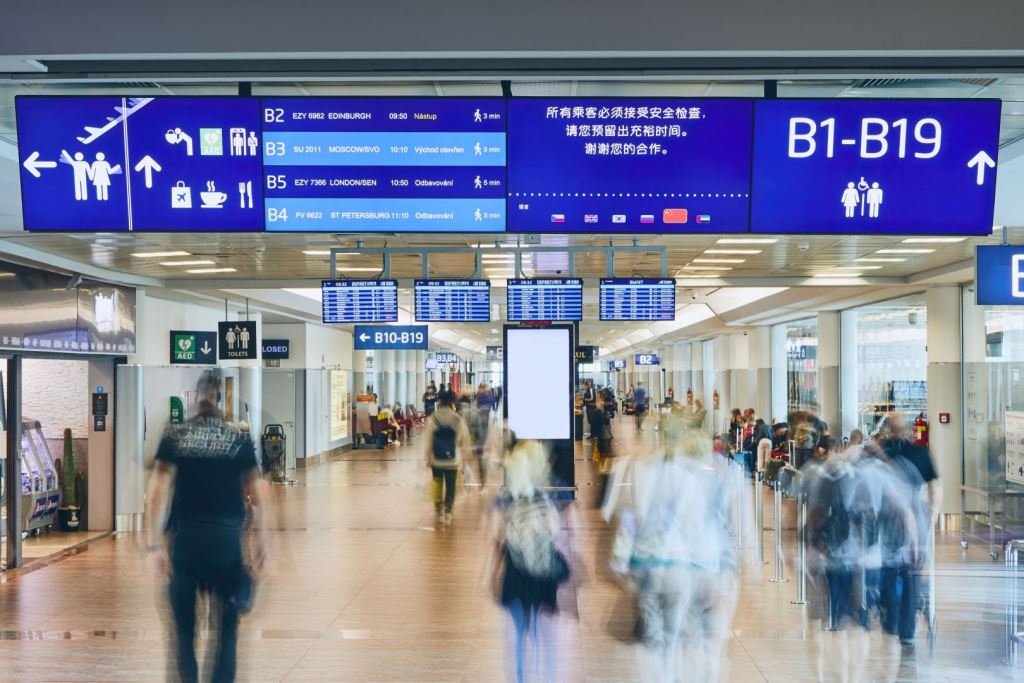AI in Tourism Market Size
According to a research report published by Spherical Insights & Consulting, The Global AI in Tourism Market Size is expected to Grow from USD 2.98 Billion in 2024 to USD 27.89 Billion by 2035, at a CAGR of 22.54% during the forecast period 2025-2035.
The AI in Tourism global market research studies offer an in-depth analysis of current industry trends, development models, and methodology. Production processes, development platforms, and the actual product models are some of the variables that have a direct impact on the market. The aforementioned characteristics can drastically vary in response to even minor changes in the product profile. The study provides a thorough explanation of each of these elements of Information & Technology.
Request To Download Free Sample copy of the report @ https://www.sphericalinsights.com/request-sample/12740
Market Overview
The AI in tourism market focuses on enhancing customer satisfaction and creating more personalized, seamless travel experiences through the use of advanced technologies. By integrating artificial intelligence into the travel industry-such as virtual tour guides, AI-powered chatbots, and tailored recommendations-businesses can better meet individual traveler needs, leading to increased customer engagement, loyalty, and overall satisfaction. Market growth is largely driven by the push for improved operational efficiency and traveler safety. A notable example is Thailand’s real-time AI travel assistant, Sukjai, which demonstrates how AI can enhance visitor experiences while supporting local digital transformation. Additionally, businesses are leveraging big data, predictive analytics, and logistics optimization to streamline travel, minimize disruptions, and improve service delivery. AI-powered safety tools further contribute to a secure and informed travel experience. Despite these benefits, the high costs associated with AI implementation remain a significant barrier to widespread adoption.
Buy Now this report: https://www.sphericalinsights.com/checkout/12740
The solution segment held the largest share in 2024 and is anticipated to grow at a significant CAGR during the forecast period.
Based on the offering, the AI in tourism market is classified into solution and services. Among these, the solution segment held the largest share in 2024 and is anticipated to grow at a significant CAGR during the forecast period. The segmental growth can be attributed to the rising need for intelligent automation and real-time information. Efficiency and user experience are improved by integration with mobile apps and reservation systems. This market is expanding steadily as the sector adopts smart technology.
The transportation & mobility services segment accounted for the largest share in 2024 and is estimated to grow at a remarkable CAGR during the forecast period.
Based on the end use, the AI in tourism market is categorized into transportation & mobility services, travel technology platforms & solution providers, accommodation & hospitality providers, and tourism experience & attraction operators. Among these, the transportation & mobility services segment accounted for the largest share in 2024 and is estimated to grow at a remarkable CAGR during the forecast period. The segmental growth can be attributed to the real-time trip information, predictive maintenance, and dynamic pricing that are just a few of the ways AI is transforming transportation. AI is being used by airlines, railways, and ride-sharing businesses to improve passenger experience and efficiency. Investments in AI-powered transportation systems are being driven by the growing desire for smooth, connected mobility.
North America is expected to hold the majority share of the global AI in tourism market during the projected timeframe.
North America is expected to hold the majority share of the global AI in tourism market during the projected timeframe. This is attributed to an increasing need for customized travel services and efficient operational tools. Large travel and hospitality companies are investing in AI-driven solutions to improve booking experiences, customer engagement, and predictive analytics. Real-time language translation, facial recognition at airports, and AI-based chatbots are all becoming more prevalent in the area’s tourism-related enterprises. Additionally, supporting this trend is the growing use of AI in transportation management, particularly in tourist-heavy cities.
Asia Pacific is anticipated to grow at the fastest pace in the global AI in tourism market during the forecast period. The growth is expanded by the robust government initiatives and digital uptake. Travel experiences and personalization are being transformed by AI-powered super-apps and smart tourism tools. Building cutting-edge AI ecosystems for the travel and tourism sector is a major responsibility of regional tech companies.
List of Key Companies
• Amazon Web Services, Inc.
• Snowflake Inc.
• Appier Inc.
• SAS Institute Inc.
• Huawei Technologies Co., Ltd.
• Salesforce, Inc.
• IBM Corporation
• Sabre Corporation
• Microsoft
• NVIDIA Corporation
• Others.
Market Challenges
1. High Implementation Costs: Developing and integrating AI technologies-such as machine learning platforms, virtual assistants, and predictive analytics-require substantial investment, which can be a major barrier for small and medium-sized travel businesses.
2. Data Privacy and Security Concerns: The use of AI relies heavily on collecting and processing personal data. Ensuring compliance with data protection regulations like GDPR and maintaining user trust remains a significant challenge.
3. Lack of Technical Expertise: Many tourism companies face a shortage of skilled professionals who can develop, maintain, and operate AI systems effectively.
4. Limited Infrastructure in Emerging Markets: In many developing regions, the digital infrastructure required to support AI applications is still underdeveloped, limiting the market’s growth potential.
5. Resistance to Technological Adoption: Some traditional travel businesses and consumers may be hesitant to adopt AI-driven solutions due to unfamiliarity or fear of automation replacing human interaction.
6. Integration with Legacy Systems: Existing travel platforms and systems may not be compatible with modern AI technologies, making integration complex and costly.
7. Ethical and Bias Issues: AI systems may unintentionally incorporate biases or make decisions that lack transparency, leading to fairness concerns in customer service and recommendation systems.
Research Objectives
1. To analyze the impact of AI technologies on enhancing customer experience, personalization, and operational efficiency in the tourism industry.
2. To identify key drivers, restraints, and opportunities influencing the adoption of AI-based solutions across various segments of the travel and tourism sector.
3. To evaluate the role of AI in improving safety, real-time assistance, and digital transformation in both developed and emerging tourism markets.
Key Recent Development
• In March 2025, LG Uplus, a South Korean telecommunications and technology company, teamed with Amazon Web Services to accelerate AI transformation in Korea through the development of a sovereign cloud, AI platforms, and consultancy services. The alliance aims to accelerate AI adoption for organizations, improve customer service skills, and increase data security and sovereignty.
Access Full Report: https://www.sphericalinsights.com/reports/ai-in-tourism-market
Market Segment
This study forecasts revenue at global, regional, and country levels from 2020 to 2035. Spherical Insights has segmented the AI in tourism market based on the below-mentioned segments:
Global AI in Tourism Market, By Offering
• Solution
• Services
Global AI in Tourism Market, By End Use
• Transportation & Mobility Services
• Travel Technology Platforms & Solution Providers
• Accommodation & Hospitality Providers
• Tourism Experience & Attraction Operators
Regional Segment Analysis of the AI in Tourism Market
• North America (U.S., Canada, Mexico)
• Europe (Germany, France, U.K., Italy, Spain, Rest of Europe)
• Asia-Pacific (China, Japan, India, Rest of APAC)
• South America (Brazil and the Rest of South America)
• The Middle East and Africa (UAE, South Africa, Rest of MEA)
What’s covered in the report?
1. Overview of the AI in Tourism Market.
2. The current and forecasted regional (North America, Europe, Asia-Pacific, Latin America, the Middle East and Africa) market size data for the AI in Tourism Market, based on segment.
3. AI in Tourism Market trends.
4. AI in Tourism Market drivers.
5. Analysis of major company profiles.
FIVE FORCES ANALYSIS
1. Competitive Rivalry – High
The market is becoming increasingly competitive as major travel companies, tech startups, and AI solution providers invest in innovation. Continuous upgrades and rapid adoption of AI tools increase pressure to stay ahead.
2. Threat of New Entrants – Moderate
While the AI in tourism market is attractive, high capital investment, technological complexity, and the need for industry-specific expertise act as barriers. However, growing demand and cloud-based solutions are lowering entry barriers over time.
3. Bargaining Power of Suppliers – Moderate
AI technology suppliers (software developers, data providers, cloud services) hold moderate power. As demand for cutting-edge AI tools rises, so does the influence of specialized AI providers, though competition among them keeps prices somewhat controlled.
4. Bargaining Power of Buyers – High
Customers-both businesses and travelers-have many options to choose from. They expect high personalization, security, and real-time responsiveness. Their power increases as switching between platforms becomes easier.
5. Threat of Substitutes – Moderate to High
Traditional tourism services, human-guided tours, and non-AI-based platforms still serve as alternatives. If AI solutions fail to deliver superior value, users may revert to more familiar or trusted methods.
PESTLE ANALYSIS
• Political: Government support for digital transformation and smart tourism initiatives boosts AI adoption.
• Economic: High initial costs may limit adoption, but long-term savings and efficiency drive ROI.
• Social: Growing demand for personalized, tech-enabled travel experiences fuels market growth.
• Technological: Rapid advancements in AI, big data, and machine learning are key enablers.
• Legal: Data privacy laws and AI usage regulations challenge implementation across regions.
• Environmental: AI can optimize travel logistics and reduce carbon footprints, supporting sustainable tourism.
Table of Content (TOC)
• Introduction
1. Objectives of the Study
2. Market Definition
3. Research Scope
• Research Methodology and Assumptions
• Executive Summary
• Premium Insights
1. Porter’s Five Forces Analysis
2. Value Chain Analysis
3. Top Investment Pockets
1. Market Attractiveness Analysis By Product Type
2. Market Attractiveness Analysis By Type
3. Market Attractiveness Analysis By Segment Type
4. Market Attractiveness Analysis By Region
4. Industry Trends
• Market Dynamics
1. Market Evaluation
2. Drivers
1. Increasing development in sector
3. Restraints
4. Opportunities
5. Challenges
• Global AI in Tourism Market Analysis and Projection, By Product Type
• Global AI in Tourism Market Analysis and Projection, By Type
• Global AI in Tourism Market Analysis and Projection, By Segment Type
• Global AI in Tourism Market Analysis and Projection, By Regional Analysis
1. Segment Overview
2. North America
1. U.S.
2. Canada
3. Mexico
3. Europe
1. Germany
2. France
3. U.K.
4. Italy
5. Spain
4. Asia-Pacific
1. Japan
2. China
3. India
5. South America
1. Brazil
6. Middle East and Africa
1. UAE
2. South Africa
• Global AI in Tourism Market -Competitive Landscape
1. Overview
1. Market Share of Key Players in the Global AI in Tourism Market
2. Global Company Market Share
3. North America Company Market Share
4. Europe Company Market Share
5. APAC Company Market Share
2. Competitive Situations and Trends
1. Coverage Launches and Developments
2. Partnerships, Collaborations, and Agreements
3. Mergers & Acquisitions
4. Expansions
• Company Profiles
1. Company1
1. Business Overview
2. Company Snapshot
3. Company Market Share Analysis
4. Company Coverage Portfolio
5. Recent Developments
6. SWOT Analysis
2. Company2
1. Business Overview
2. Company Snapshot
3. Company Market Share Analysis
4. Company Coverage Portfolio
5. Recent Developments
6. SWOT Analysis
3. Company3
1. Business Overview
2. Company Snapshot
3. Company Market Share Analysis
4. Company Coverage Portfolio
5. Recent Developments
6. SWOT Analysis
Browse Related Reports:
Global Testing, Inspection, and Certification Market Size Share
https://www.sphericalinsights.com/reports/testing-inspection-and-certification-market
Global Telecom Cloud Market Size, Share
https://www.sphericalinsights.com/reports/telecom-cloud-market
About the Spherical Insights & Consulting
Spherical Insights & Consulting is a market research and consulting firm which provides actionable market research study, quantitative forecasting and trends analysis provides forward-looking insight especially designed for decision makers and aids ROI.
Which is catering to different industry such as financial sectors, industrial sectors, government organizations, universities, non-profits and corporations. The company’s mission is to work with businesses to achieve business objectives and maintain strategic improvements.
CONTACT US:
For More Information on Your Target Market, Please Contact Us Below:
Phone: +1 303 800 4326 (the U.S.)
Phone: +91 90289 24100 (APAC)
Email: inquiry@sphericalinsights.com, sales@sphericalinsights.com
Contact Us: https://www.sphericalinsights.com/contact-us
Follow Us: LinkedIn | Facebook | Twitter
This release was published on openPR.





































You must be logged in to post a comment Login